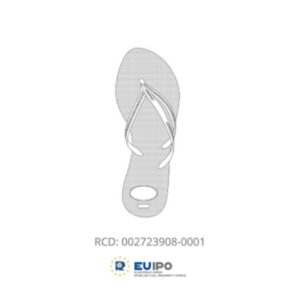In cases that don’t involve identical trademarks and identical goods and services (or a mark with a reputation) it is necessary to prove likelihood of confusion between the two trademarks.
Likelihood of confusion and trademarks
In cases that don’t involve identical trademarks and identical goods and services (or a mark with a reputation), it is necessary to prove the likelihood of confusion between the two trademarks (section 10 (2) TMA.
The court will examine whether confusion was likely at the time when the allegedly infringing goods were first sold.
The following rules apply:
It is necessary to consider not only the actual use that a claimant has made of its mark, but also a notional and fair use of the mark in respect of all of the goods falling within the scope of the specification.
A likelihood of confusion may be inferred from the surrounding circumstances. In an early case concerning Montblanc pens, the High Court held that it was entitled to come to its own view on the risk of confusion between the goods or services of one undertaking and another, even if there was no evidence of confusion. The judge found that the similarity of the defendant’s symbol to that of the claimant’s, and the fact that both parties sold pens and that the symbols were displayed in similar places on both goods, were sufficient to support the claim.
“Confusion” includes a likelihood of association, that is, that the relevant public would think that the goods have the same origin or an associated origin. However, mere association on its own is not enough to satisfy the requirement for a likelihood of confusion It does not include a “non-origin association” (the situation where one mark calls another to mind, without any confusion as to origin).
There were several ECJ judgments between 1997 and 1999 which set out the test for assessing the likelihood of confusion between a sign and an earlier trademark.
1 Sabel, In Sabel BV v Puma AG.
Sabel BV, a Dutch company, sought to register the trade mark SABEL and a device of a bounding cat (resembling a cheetah) for goods including jewellery, leather, clothing and fashion accessories. Puma AG opposed this registration on the basis of its earlier registrations for the separate devices of a bounding cat (a puma) and a leaping cat (also a puma), covering jewellery, leather and clothing.
Following a reference from Germany’s Federal Court of Justice, the ECJ gave a preliminary ruling to the effect that:
• The mere fact that two trade marks are conceptually similar is not enough in itself to conclude that there is a likelihood of confusion.
• The likelihood of confusion must be assessed by taking into account all factors relevant to the circumstances of the case. An assessment of the visual, aural or conceptual similarity of the marks in question must be based on the overall impression given by the marks, bearing in mind their distinctive and dominant components.
2. Canon V MGM
The degree of distinctiveness of the registered mark can be decisive. In Canon v MGM, Canon was the registered owner of the trade mark CANON in Germany in respect of cameras. MGM sought to register CANNON in respect of video film cassettes. Canon opposed MGM’s application, arguing (on the basis of the equivalent under German law of s 10 (3) of the TMA) that the reputation and distinctive character of its mark should be taken into account when assessing the similarity of the goods covered by the two marks. MGM argued for an objective assessment of similarity. The ECJ held that the distinctive character of a trade mark, and in particular its reputation, should be considered when assessing similarity of goods, as there was a greater likelihood of confusion where distinctive marks are involved. As such, marks with a highly distinctive character enjoyed greater protection than marks whose character was less distinctive.
3. Lloyd Schuhfabrik
The ECJ elaborated further on the global assessment of likelihood of confusion. This was a reference from the German court of questions concerning similarity between signs. In its ruling, the ECJ said that the more similar the goods or services covered, and the more distinctive the earlier mark, the greater the likelihood of confusion. It also said that when the court was assessing the degree of distinctiveness enjoyed by the earlier mark, it should take into account all relevant factors, including the mark’s inherent characteristics, and the fact that it did (or did not) contain elements which described the goods or services in question.
4. Lotus Group against the Team Lotus Formula One racing team
The global test of similarity can lead to a finding of non-similarity even where goods or services appear to be closely related. The sports car manufacturer Lotus Group brought a s. 10(2) claim against the Team Lotus Formula One racing team. The High Court found that there was no likelihood of confusion even though both sides were participating in Formula One racing side by side under the “Lotus” name. This was largely because it was common practice for different teams to use the same brand name in this way, and commentators and spectators alike were used to differentiating between such teams.











